Quadcopter V1 - The Hulking Quadcopter
Description
This is a reasonably heavy duty FPV quadcopter with some spare capacity for extra batteries or payload. Blender models, STLs, and component shopping lists are all included in the downloads. An updated version is described here. This design was first aired on Thingiverse.
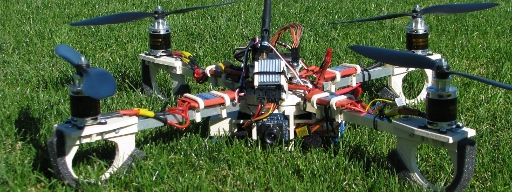
Instructions
This project arose after reading a great article by Darren Yates in the TechLife Magazine (August 2013 issue). I suddenly felt inspired, and so settled down to designing a new Quadcopter using similar components to those recommended in the article, but using a slightly better quality transmitter, adding FPV and using more powerful selections for the powertrain. The motor and ESC selection came from one of the recommended options for the Aeroquad open source project. This selection dictated the prop size and pitch. I was also keen to build the frame on the 3D Printer so that it incorporated all of the features I wanted to include.
I found that Darren’s recommended flight controller, the KK2.0, was available on HobbyKing at the time so I quickly designed up the rest of the electrical system and got my order in. I have included a list of the components selected for the project in the zipped up file that can be accessed below. The list is comprehensive and covers what you need if you were to build this project from having zero radio control equipment to hand. The only missing item of significance from this list is the FPV video viewing device as there are quite a few options available and potentially something you may already have to hand. I would recommend for this the monitor sold by FoxtechFPV which incorporates a diversity receiver this will give you a tidy package that avoids the need for the separate FPV receiver and associated fittings.
Download the Project Files here
The printed parts were designed in Blender 2.58 and printed on an Ultimaker. The Blender model is included in the downloaded Project Archive from the link above to help with assembly or modification. For Non-Blender users there is also a 3DS version in the downloads. STLs have all been tested in Slic3R. Generally I used a 25% fill but the lightly loaded bits such as the feet and top deck were done with a 10% fill.
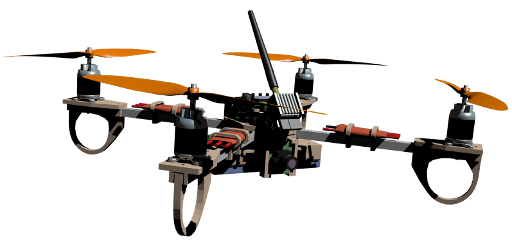
I have included an image and pdf of the small bracket that holds the FPV transmitter on in the project archive file accessed above. This is designed to be cut from a piece of plastic bottle and screwed + glued to the back of the two printed FPVtransmitter cradle sections. Bike inner tube rubber and packing foam have been used to back some of the electronic components, and provide soft washers. Plastic tubing has been used to line the top parts of the M4 rods and keep the ESC cables away. Velco ties firmly hold the battery in its cradle, and cable ties have been used extensively to hold components in place and tidy up the wiring. The camera, the receiver and the FPV transmitter are held into their brackets using cable ties.
I recommend clearing out all holes with either a 3.2 or3.5mm drill bit for those designed for the M3 screws or a 4.5mm drill bit for the holes designed to take the four M4 threaded rods. Nylon lock nuts should be used on the M4 rods and the M3 bolts holding the controller onto the top deck. There are quite a few places where recesses have been designed for M3 nuts. These are a snug fit when printed on the Ultimaker but may require clearing with a knife for other printers. The landing feet also have a couple of slots each for M4 nuts. Put the nuts in the slots then clip the landing feet into the aluminium channel to trap them. You will then be able to screw the M4 machine screws into them to hold the whole lot in place.
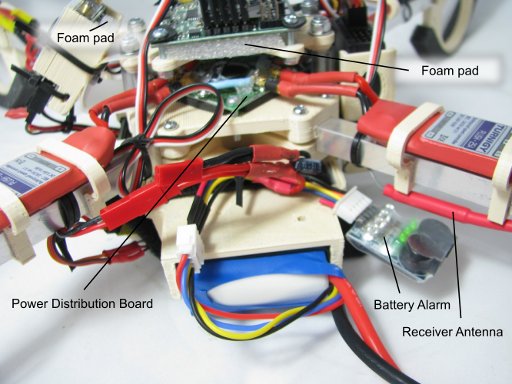
The Power Distribution board supplied by HobbyKing and included in the list of items is a really useful piece of kit BUT it’s current rating is not high enough for the currents drawn by the ESCs at full power. I added in some relatively heavy copper wire (powercord cable) between the connectors to carry the additional current. It’s a bit ugly but seems to work.
I thoroughly recommend getting hold of a simulator. Admittedly they are expensive but they are realistic and allow you to develop your automatic skills at flying Radio Control aircraft and ‘copters. The expense is easily offset by saving yourself the time you would otherwise spend repairing and fixing your planes after crashing. I use RealFlight from Towerhobbies, but if you have the right transmitter PhoenixRC is also an excellent simulator. Hobbyking have a simulator based on the open source FMS (Flying Model Simulator) which is not bad and will certainly help but doesn’t quite have the same level of realism as the other two. I think I am off-topic. Enjoy the project if you make one yourself, and thanks for looking.
Other Pictures
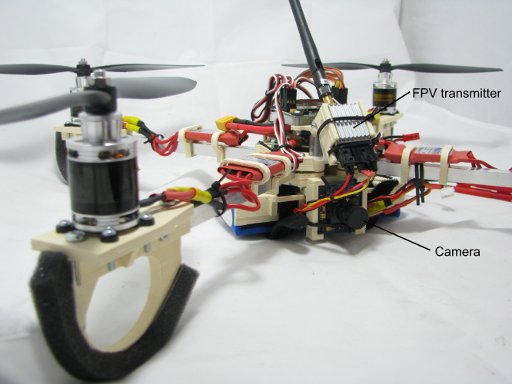
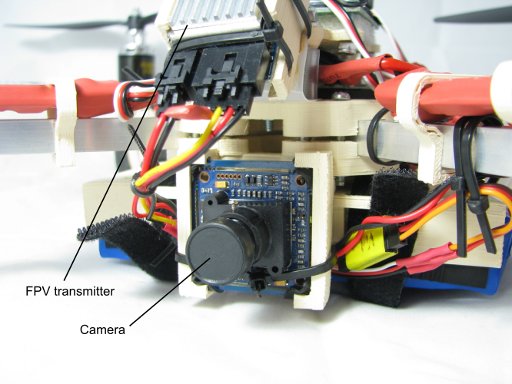
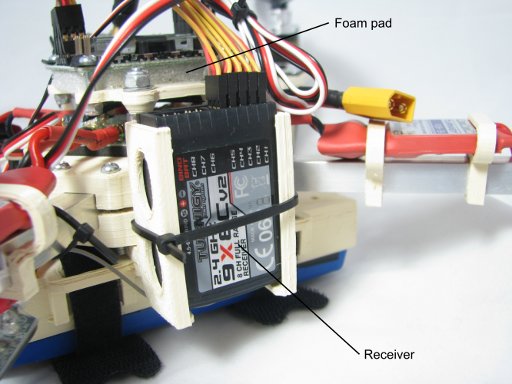
Digital Models of the Commercial Components
If you are looking for 1:1 scale digital models of the commercial components used in this project you will be able to find most of them in Blender and OBJ formats on the Component Model Library Page